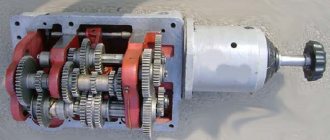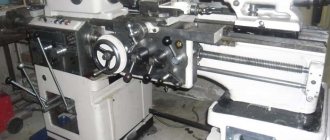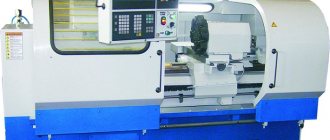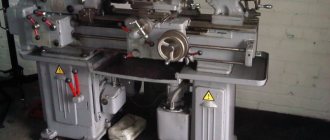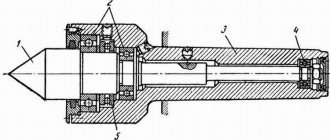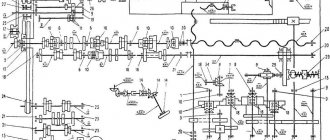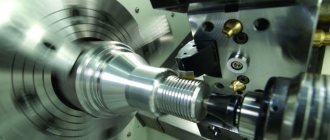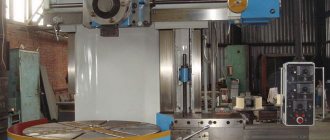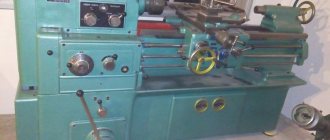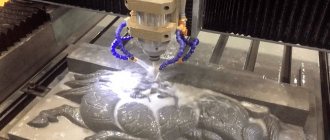Any modern CNC turning and milling machining center can significantly expand the technical capabilities of a metalworking enterprise. Universal multifunctional equipment is offered in the ATM Group catalog in several versions. You can order machines for milling and turning parts on the website. You can also contact managers by phone by dialing.
CNC machining centers are offered at competitive prices. With the help of such centers, complex processing of parts becomes possible. Qualified managers will help you choose the right CNC machine based on your tasks.
Types of turning and milling centers
They are classified according to the following criteria:
- presence or absence of a CNC block;
- direction of spindle movement (it can be vertical or horizontal);
- list of permitted operations.
Units not equipped with CNC are produced:
- with manual control;
- semi-automatic;
- fully automatic.
The CNC turning and milling machining center has several varieties:
- the so-called classical layout;
- equipped with a special counter-spindle;
- having a built-in drive;
- milling machine with turning axis;
- established by the so-called C-axis.
CNC turning center
Turning center with counter spindle
Each of them is capable of simultaneously performing a large sequence of processing operations.
What are the main parameters you need to pay attention to when choosing a lathe?
- Power of the main turning spindle and torque developed by the spindle: a more powerful, high-torque spindle will increase productivity, especially with “heavy” machining (large diameter parts, processing of difficult-to-cut materials, machining with large cutting depths and feeds).
- Maximum number of revolutions of the turning spindle: a more revving spindle will make the processing of small-diameter parts more productive compared to a low-speed spindle, as it will allow you to fully realize the capabilities of modern metal-cutting tools.
- Dimensions of the working area: maximum processed diameter, set diameter of workpieces, distance between centers.
- Spindle size: the diameter of the front support of the spindle, as well as the through hole in it: a larger diameter of the through hole in the spindle will allow you to work with a bar workpiece of a larger diameter, and a larger standard size of the spindle provides a larger permissible weight of the installed workpiece.
- The values of working and rapid feeds on all axes of the machine.
- Type of guides: sliding guides or rolling guides, guide sizes.
- Positioning accuracy and axis repeatability.
- The total mass of the equipment is an indirect criterion for the rigidity of the equipment: higher mass means higher rigidity and productivity.
- Availability of additional equipment: automatic tool binding and part measurement system, coolant supply system at the required pressure, load monitors, vibration damping systems, temperature expansion compensation systems.
- Modern CNC system: convenient graphical HMI interface, graphical simulation systems for real-time processing, control and collision avoidance systems, as well as the ability to connect the machine to an MES system.
Main characteristics
The turning and milling center is a multifunctional device. It contains complex kinematics and electronic software. It is quite difficult to list all the characteristics of such units. They are included in the description of each machine. The main characteristics include the following:
- number of operations performed;
- processing accuracy class;
- permissible diameter and permitted length of the workpiece;
- type of installed CNC;
- maximum permissible movement of the caliper in the longitudinal and transverse plane;
- the power of each of the two drives (the drive of the main movement and the rotating tool);
- permissible limits of spindle speed (main, milling and drilling);
- high speed (in the X and Z planes mm/min, rotation C rpm);
- number of head positions;
- positioning accuracy in all planes;
- tool change time;
- geometric dimensions of the machine;
- full mass.
Approximate characteristics of a turning center
Applications and features of CNC technology
Universal metalworking centers are offered in several versions. The equipment combines the capabilities and advantages of milling and turning turret machines. The features of this technique are:
- high accuracy of turning operations, for example, grooving, threading, hole preparation;
- milling workpieces of any configuration, size, level of complexity, for example, development of grooves and grooves, preparation of profile surfaces;
- processing machines are made on the basis of a modular principle, high-precision equipment can be modernized and modified;
- Each unit includes a module; the presence of software control makes the machines functional and in demand on the market.
The main characteristics of the units are overall dimensions, spindle parameters, rotation speed, number of available operations, structural rigidity, drive type and other criteria.
Operations Performed
The CNC turning center is capable of performing the following operations: drilling, turning and milling. Drilling can be done on flat and curved surfaces. All turning operations are carried out on them:
- turning of various cylindrical parts (cones, shafts, spheres);
- turning of various depths of grooves;
- bore the internal surfaces of the cylinders (for bearings or oil seals);
- perform reaming and honing;
- cutting various threads.
The turning and milling machine performs milling operations:
- planes;
- various bodies of rotation;
- shaped and profile milling;
- processing of screw products;
- gear hobbing.
Lathe machining center in operation
Universal multifunctional turning centers are used in the automotive and agricultural engineering, aviation and space industries. With their help, parts of complex geometric shapes are manufactured with high precision. First, the part is processed on a turning center. Then milling is carried out on CNC machines. This allows you to obtain a high quality surface.
Advantages of the equipment
When purchasing a vertical milling or turret lathe, a company spends more money than when purchasing a combined metalworking center. The advantages of this technique include:
- the workpiece is installed and fixed once for the entire processing cycle, which will allow achieving high accuracy of the finished product;
- the tool is changed according to the established algorithm; the operator is required to monitor the operation of the equipment and timely change of workpieces;
- the risk of producing defective parts is minimized, while the cost of production becomes lower and the production speed increases;
- machining centers are equipped with powerful and durable drives that operate without failures throughout their entire service life;
- versatility of use, with the help of a processing center it is possible to produce products of any complexity, the type of material also varies widely;
- machines are used to produce products in large and small batches; setting up a given operating algorithm takes a minimum of time.
sells Korean-made CNC machines that have a reputation for productive, multifunctional equipment. The quality of the drive, axles, bearings, and other structural elements is not satisfactory. The units can be ordered with delivery throughout the Moscow region and other regions of Russia. The company provides warranty and post-warranty maintenance of equipment and sells centers at competitive prices. If necessary, each client can count on professional advice and assistance in selecting technically complex and expensive devices.
Our advantages
| High-quality CNC vertical milling machines. On the market since 2004. |
| Reasonable prices. The cost of equipment is calculated individually. |
| Special price lists for our regular customers. |
| Reasonable deadlines. We fulfill the terms of the contract. Delivery just on time. |
Request for proposal
Send message
Design and technical characteristics
Structurally, CNC metalworking centers are divided into vertical and horizontal . This depends on the location of one or more spindles. A separate group includes portal centers capable of processing workpieces of any complexity. Such installations can include up to 180 processing tools and process large parts.
A modern machining center is a rather complex engineering structure. The basis is a massive cast iron frame. It is heat treated to ensure maximum structural rigidity. Ball screws are installed on the frame to feed the workpieces. The feed speed can reach up to 40 m/sec. with the ability to position workpieces along the X, Y, Z axes and with an accuracy of up to 0.010-0.005 mm.
Universal turret heads are installed on horizontal and vertical metalworking centers , holding 12-16 tools with the ability to change in just 0.2-0.5 seconds in different planes. But portal installations differ not only in the number of processing tools, but also in the system of their high-speed change, more powerful spindles, a variety of interchangeable heads, long narrow tables and generally higher structural rigidity. As a result, this allows them to carry out high-precision processing of massive parts.
Processing
The European brand “TRENS” produces a line of machines with an inclined bed. Their unique design ensures high precision processing due to the special strength of the tools. The machines are aimed at large and medium-sized serial production and production of complex profiles and parts. The following models of TRENS machines are in demand:
- "SBL 500 A" is designed for parts weighing up to 1050 kilograms. The unit is equipped with a reliable drive (Fagor, Siemens), milling and boring is provided by a CNC system with a counter spindle. The headstock has a hydraulic drive and hydraulic fixation of the workpiece. Special operations are provided, such as off-axis drilling.
- The SBL 300 with a C-axis performs standard milling operations, including finishing of flanges, shafts and other complex parts, and is suitable for thread cutting. The particularly rigid spindle is designed for long-term high-speed rotation and high productivity of the machine. The C-axis has a disk locking system, which allows you to instantly switch operating modes.
- “SBL 700” is the most complex and technologically advanced, capable of processing heavy (up to 2500 kg) curved, stepped and straight profiles. Operation control is carried out from Siemens CNC with 3D programming (connection to a PC via the Internet is possible).
Varieties
The design of the simplest machine contains a bed - the base of the machine, a spindle - a shaft with a chuck for securing the workpiece, a threading screw, a support - a mount for the cutter, a tailstock - a fastening element that holds the workpiece.
Simple design
Varieties of turning and milling equipment, of which a huge number are produced, allow it to be used in any production. So, for small auto repair shops and shops for repairing household appliances, a desktop or benchtop turning and milling machine for metal weighing up to 1 ton is quite suitable. Such a machine can perform the most common operations: longitudinal and transverse turning, thread cutting and drilling, processing splines, grooves, boring, milling, grinding.
Reference. A manually driven machine is even simpler - it is quite capable of drilling, milling and turning parts for household needs. And if such a machine is equipped with a copier, then it can be used to turn furniture legs, balusters, and flutes.
With counter spindle
When the machine began to use a counter spindle instead of a tailstock, its functionality and reliability increased significantly. Without operator intervention, the counter spindle allows you to hold and simultaneously process the workpiece. Additionally installed work fixture changers increase the productivity of the machine several times and allow it to be used for serial production of products.
With drive center
To increase the mobility of the machine head when milling and drilling holes, the designers replaced conventional revolvers with heads with a built-in movable tool. The mounting hole in them is arranged for cones of the Capto, ISO, BT, HSK type, suitable for turning cutters, due to which various operations have become possible: metal drilling, countersinking, chamfering, threading, etc.
C, mounted C-axis
In machines with a C-axis there is a changer of working devices, and drills and cutters are equipped with their own drive. It also provides control of the rotation speed of the workpiece at the time of its processing and indexing of the angular position (with an accuracy of 0.001°). Such centers allow you to perform complex operations that are inaccessible to other machine designs:
- boring of worm gears;
- milling of gears and crankshafts.
The servo drive and CNC are responsible for movement along the axes in machining centers.
